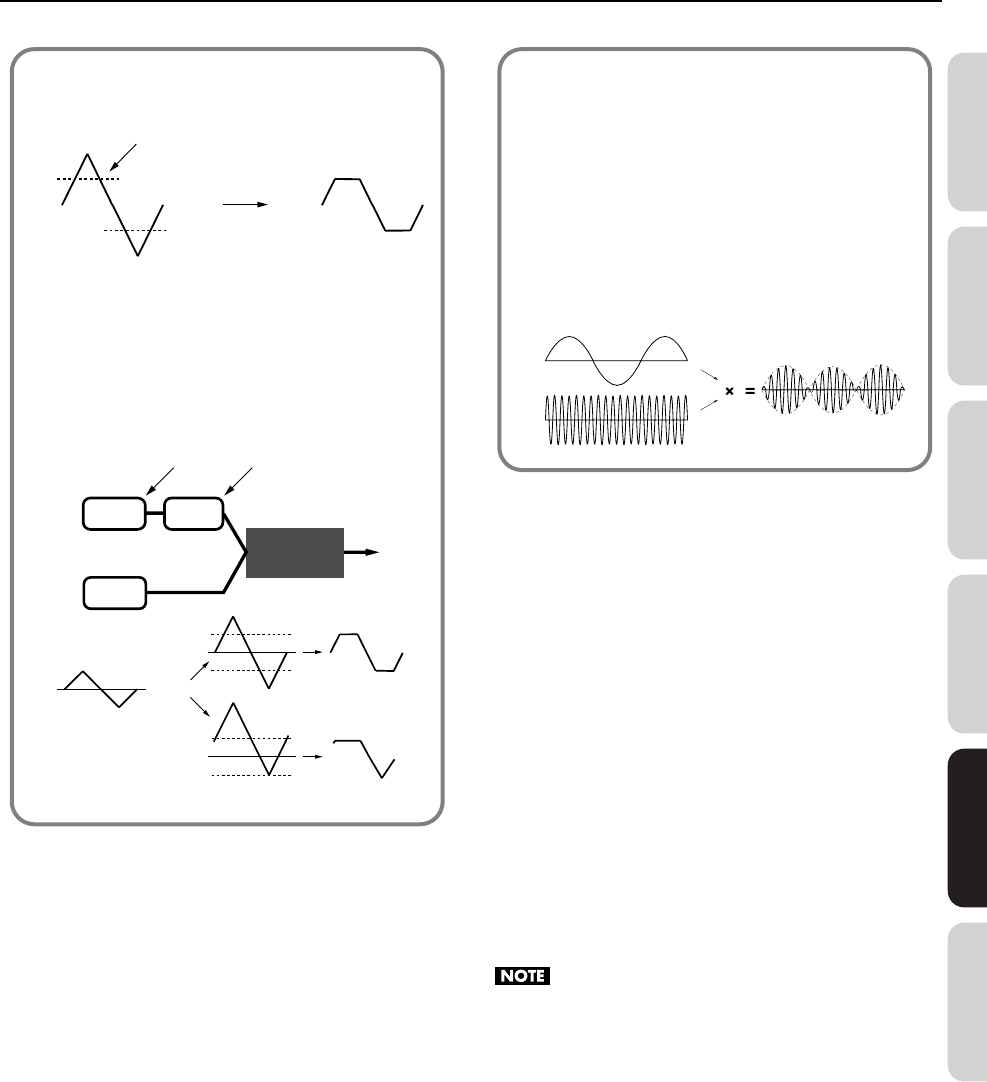
103
Creating a Patch
Overview Connections VS-700C Console VS-700R I/O Fantom VS Appendix
Key Fade Lower (Keyboard Fade Width Lower)
This determines what will happen to the tone’s level when a
note that’s lower than the tone’s specified keyboard range is
played. Higher settings produce a more gradual change in
volume. If you don’t want the tone to sound at all when a
note below the keyboard range is played, set this parameter
to “0.”
Value:
0–127
Key Range Lower (Keyboard Range Lower)
Specifies the lowest note that the tone will sound for each
tone.
Value:
C-1–UPPER
Key Range Upper (Keyboard Range Upper)
Specifies the highest note that the tone will sound for each
tone.
Value:
LOWER–G9
If you attempt to raise the lower key higher than the
upper key, or to lower the upper key below the lower
key, the other value will be automatically modified to
the same setting.
Booster
The Booster is used to distort the incoming signal.
fig.06-024.e
In addition to using this to create distortion, you can use
the waveform (WG1) of one of the tones as an LFO
which shifts the other waveform (WG2) upward or
downward to create modulation similar to PWM (pulse
width modulation). This parameter works best when
you use it in conjunction with the Wave Gain parameter
(p. 105).
fig.06-025.e
Booster level
TVA
WG1
WG2
Booster
Adds to WG1
Shift in waveform by WG1
Distorted area of the
Waveform changes
WG2
Uses WG1 as LFO
Adjusts WG1 output
Ring Modulator
A ring modulator multiplies the waveforms of two tones
with each other, generating many new overtones (in
harmonic partials) which were not present in either
waveform. (Unless one of the waveforms is a sine wave,
evenly-spaced frequency components will not usually
be generated.)
As the pitch difference between the two waveforms
changes the harmonic structure, the result will be an
unpitched metallic sound. This function is suitable for
creating metallic sounds such as bells.
fig.06-026
VS-700_r_e.book 103 ページ 2008年11月20日 木曜日 午後2時28分


















